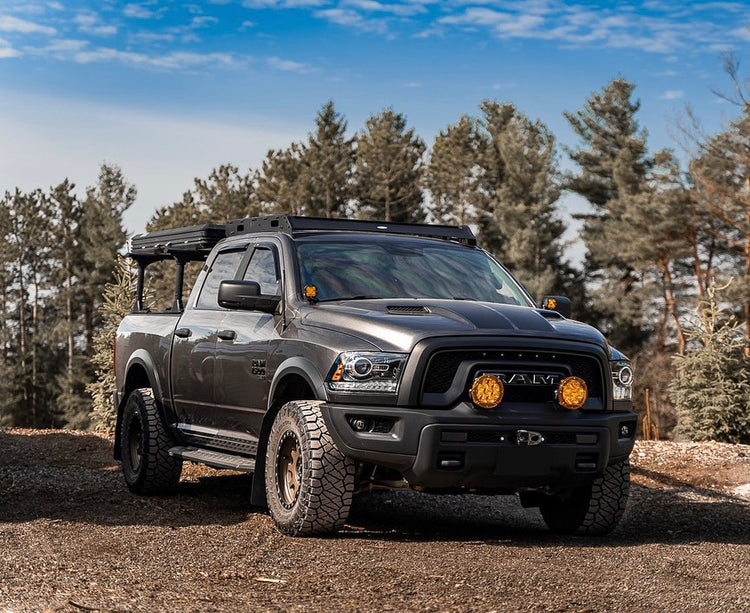Choosing a finish for your aftermarket steel bumper is a critical decision that impacts its appearance, durability, and longevity. The journey from a raw steel shell to a protected, finished product involves several key stages, with material and craftsmanship being paramount.
1. The Foundation: The Steel Itself
The base material dictates the finishing requirements.
-
Mild Steel: The most common material. It is strong and cost-effective but is highly susceptible to rust. Therefore, the finish's primary job is corrosion prevention.
-
Stainless Steel: Naturally corrosion-resistant due to its chromium content. It is often left polished or brushed for a show finish, but can also be powder-coated for color and added protection.
-
Aluminum: Lightweight and corrosion-resistant, but softer and more expensive. It requires specific pretreatment for coatings to adhere properly.
2. The Armor: Types of Finishes
The finish is the bumper's protective shell and its aesthetic skin. The quality of both the material and the application (craftsmanship) defines its performance.
| Finish Type | Material | Craftsmanship | Result & Best For |
|---|---|---|---|
| Powder Coat | Thermoset Polymer Powder: Electro-statically charged particles that melt and cross-link when baked. |
1. Surface Prep: Critical. Must be chemically cleaned/etched and sandblasted to a clean, rough anchor profile. 2. Application: Electrostatically sprayed in a controlled booth for even coverage. 3. Curing: Baked at a precise, high temperature (often ~400°F / 200°C) to flow and cure into a hard film. |
Durable, uniform, professional finish. The industry standard for most applications. |
| Spray-On Bed Liner | Urethane or Polyurea-based: Thick, viscous coatings loaded with rubber granules for texture. |
1. Surface Prep: Similar to powder coat—must be perfectly clean and abrasive-blasted. 2. Application: Sprayed with a specialized high-pressure gun. Texture is controlled by spray technique and material. 3. Curing: Air dries or cures chemically. Thickness is key to durability. |
Ultimate impact and abrasion resistance. Function-over-form for hardcore off-road. |
| Automotive-Grade Paint | Urethane or Acrylic Enamel: Liquid paint with a separate hardener and clear coat. |
1. Surface Prep: Must be clean, smooth, and primed. 2. Application: Sprayed in multiple thin coats (primer, basecoat, clearcoat) in a dust-free environment. 3. Curing: Can be air-dried or force-dried (baked). |
Perfect color match and glossy show finish. Softer and less durable than powder coat. |
| Electrocoating (E-Coat) | Water-Based Epoxy Paint: A primer applied via an electrical charge. |
1. Process: The entire bumper is immersed in a tank and an electrical current is applied, causing the paint to deposit uniformly on all surfaces. 2. Use: Almost exclusively used as an undercoat before powder coat or paint. |
Unbeatable corrosion protection in seams and hidden areas. A sign of a high-quality process. |
3. The Hallmarks of Quality Craftsmanship
A high-quality material can be ruined by poor craftsmanship. Here’s what to look for:
Surface Preparation (The Most Important Step):
- Poor Craftsmanship: Simple wipe-down or no preparation. Paint is applied over mill scale, rust, or oil. This guarantees failure.
- Quality Craftsmanship: Abrasive blasting("sandblasting") to remove all contaminants and create a microscopic rough surface for mechanical adhesion, followed by a chemical wash/phosphatizing to prevent under-coat rust.
Primer & Corrosion Protection:
- Poor Craftsmanship: No primer, or a simple spray-can primer.
-
Quality Craftsmanship: Use of an E-Coat or a high-quality epoxy primer. This provides a chemically bonded, non-porous layer that seals the steel from moisture, preventing "underfilm" corrosion that can spread from a chip.
Application Environment & Technique:
- Poor Craftsmanship: Sprayed in a dusty, uncontrolled garage. Results in runs, drips, orange peel, and dust embedded in the finish.
- Quality Craftsmanship: Applied in a climate-controlled, clean spray booth with proper lighting and ventilation by experienced technicians.
Curing
- Poor Craftsmanship: Air-dried at ambient temperature. The coating never fully achieves its maximum hardness and chemical resistance.
- Quality Craftsmanship: Baked in a large, temperature-controlled oven according to the coating manufacturer's exact specifications. This ensures the coating fully cross-links and reaches its stated durability.
The Gold Standard: A Multi-Stage Process
The most durable bumper finish you can get is a combination of these processes, showcasing the pinnacle of material and craftsmanship:
-
Abrasive Blasting to raw steel.
-
E-Coating for complete, 360-degree corrosion protection.
-
Powder Coating for color, UV resistance, and texture.
-
(Optional) A final clear powder coat for extra gloss and protection.
Conclusion:
When selecting an aftermarket bumper, don't just look at the design and price. Inquire about the finishing process. A manufacturer that details their multi-stage prep, E-coat, and powder coating process is offering a product built to last, justifying a higher price than one that simply states "textured black finish." The investment in superior craftsmanship will pay off in long-term durability and appearance.

